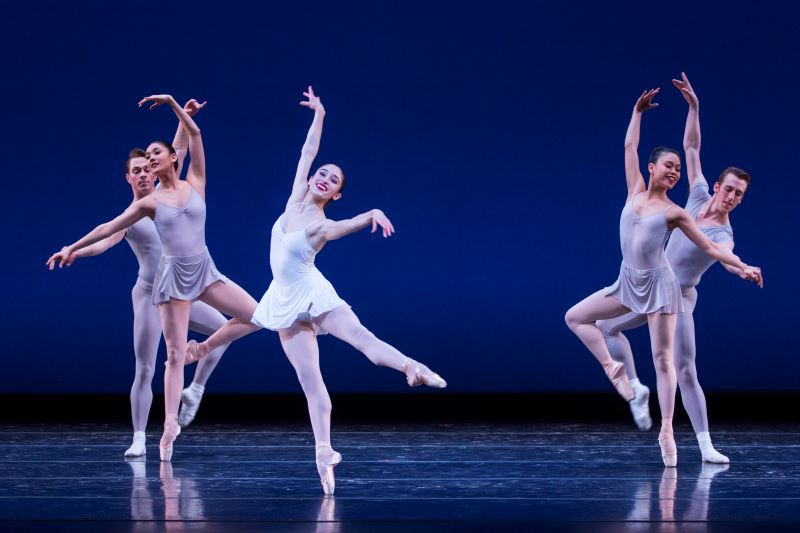Spotlight on Square Dance – Balanchine’s Fusion of Ballet and American Folk Dance
George Balanchine’s Square Dance is a fascinating combination of two surprising elements: American square dancing and classical ballet. Balanchine (1904-1983) explained, “I have always liked watching American folk dances, especially in my trips to the West, and it occurred to me that it would be possible to combine these two different types of dance, the folk and the classic, in one work… The invention, its superb preparation for risks, and its high spirits are some of the things I was trying to show in this ballet.” Today on the PNB Blog, we’ll explore how Balanchine combined these two styles of dance to make one beloved ballet!

Square Dance shares many elements with its namesake. The ballet begins with six couples scattered around the stage, standing casually. They create a scene reminiscent of movers in a dance hall. Throughout the ballet, this group of dancers moves around the stage in constantly shifting but always precise patterns, as square dancers would. Square Dance even contains a few movements taken directly from quadrille dances; for example, early in the ballet, the dancers walk to the group’s center and curtsey, then walk out. Perhaps the most striking element borrowed from square dancing is the dancers’ use of call and response. For example, the lead dancer jumps, and then the group of dancers behind them jumps in the exact same way. The lead dancer is like a square dance caller, cueing the group.

Square Dance’s use of call and response used to be even more obvious! When it was first performed in 1957, popular square dance caller Elisha Keeler (1907 – 2005) was onstage, calling out the steps of the ballet dancers. The orchestra was also onstage, wearing Western-style shirts. However, Square Dance was revived in 1976 without the caller and with the orchestra in the pit. Patricia Wilde (1928-2021), who performed the lead role in both versions, remembered, “[Keeler] did very clever calls, and they were strictly the way he would call a square dance. I also remember that in performances sometimes, he would not be with what I was doing at all. He would be saying, ‘and her feet go whickety whack,’ and I would be doing a pirouette… so I wasn’t terribly sorry when we did it later and he was not doing the calls anymore.”
Click “play” below to watch Patricia Wilde perform Square Dance with a caller!
Square Dance is a joyful, boisterous ballet, and the American folk dance-inspired elements certainly contribute to that feeling. However, the ballet also shines because of the impressively quick, rhythmic footwork. In Square Dance (and other ballets like it), George Balanchine pushed ballet dancers to another level of technique. Wilde said, “He stretched the technique… the way he worked with us was so careful and so specific.” Balanchine’s unique combination of fast, balletic jumps and turns with the complex group dynamics of square dancing make this ballet truly special.





